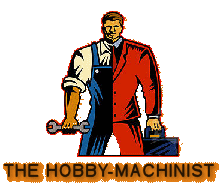- Joined
- Oct 4, 2020
- Messages
- 484
Are you using a chuck stop when seating the part for the second op? By "chuck stop" I'm referring to this type of setup:
View attachment 436844
I have a setup like that, and simply zero out the DRO against the face of the stop. But for really tight tolerance work, I also made a set of adjustable chuck stops that mount directly to the chuck. I documented that effort in this posting:

Adjustable Chuck Stops For 3 and 4 Jaw Chucks - long post
This is not specific to Precision Matthews, so if this post belongs somewhere else on this site, let me know. I decided I needed useful chuck stops for my PM1340 lathe. I had tired of trying to use a pair of parallels to hold stock off the face of a chuck in bringing the stock to an...www.hobby-machinist.com
I don't, but I know I've needed one several times. I used a set of cheap parallels to set the part depth. Not sure if that helped or hurt me.




